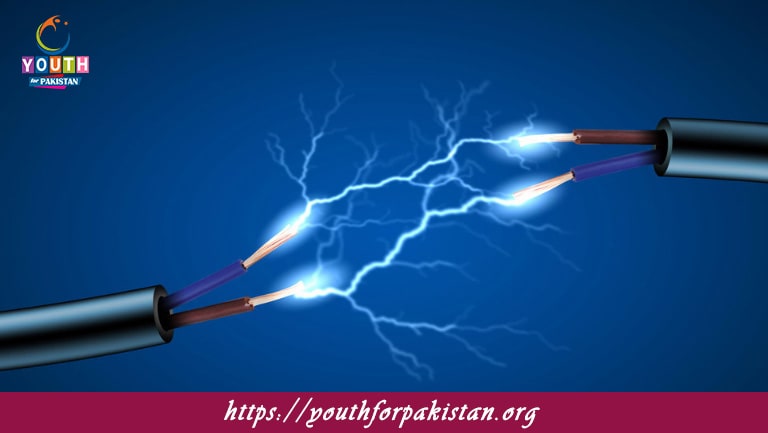Welcome to the Electric Power MDCAT MCQs with Answers. In this post, we have shared Electric Power Multiple Choice Questions and Answers for PMC MDCAT 2024. Each question in MDCAT Physics offers a chance to enhance your knowledge regarding Electric Power MCQs in this MDCAT Online Test.
Electric Power MDCAT MCQs Test Preparations
Electric power is defined as:
a) The rate at which energy is consumed
b) The rate at which energy is stored
c) The total amount of energy consumed
d) The total amount of energy stored
The unit of electric power is:
a) Joule
b) Watt
c) Ampere
d) Volt
Which of the following is the correct unit of power in the SI system?
a) Newton
b) Joule
c) Watt
d) Ohm
If a light bulb has a power rating of 60 watts and is connected to a 120-volt source, the current flowing through it is:
a) 0.5 A
b) 1.5 A
c) 2.0 A
d) 5.0 A
Electric power can be calculated by multiplying:
a) Current and voltage
b) Current and resistance
c) Voltage and resistance
d) Power and time
The total power used by a series circuit with a voltage of 10V and a resistance of 5 ohms is:
a) 2 W
b) 10 W
c) 50 W
d) 100 W
In a parallel circuit, the total power is the:
a) Sum of the power across each component
b) Product of the resistances
c) Average of the power across each component
d) Difference between the highest and lowest power
Power factor in an AC circuit is the ratio of:
a) Real power to apparent power
b) Reactive power to real power
c) Voltage to current
d) Current to resistance
The power consumed by a device can be increased by:
a) Increasing the voltage
b) Increasing the resistance
c) Decreasing the current
d) Decreasing the voltage
In an electric circuit, if the power is doubled while the resistance remains constant, the current will:
a) Increase by a factor of √2
b) Increase by a factor of 2
c) Decrease by a factor of √2
d) Decrease by a factor of 2
The power delivered to an electric heater is 1000 watts and it operates at 240 volts. The current through the heater is:
a) 2.5 A
b) 4.2 A
c) 5.0 A
d) 10.0 A
If the power rating of an electrical device is 1500 watts and it operates at 230 volts, the resistance of the device is:
a) 34.33 Ω
b) 46.67 Ω
c) 51.33 Ω
d) 69.33 Ω
The power dissipated in an electrical circuit is directly proportional to:
a) The square of the current
b) The square of the voltage
c) The product of voltage and current
d) The resistance of the circuit
In an AC circuit, real power is measured in:
a) Volt-amperes
b) Ohms
c) Joules
d) Watts
The efficiency of an electrical device is given by:
a) Output power / Input power
b) Input power / Output power
c) Voltage / Current
d) Current / Voltage
Which of the following does not affect the power consumption of an electric device?
a) Voltage
b) Current
c) Time of operation
d) Resistance
The power factor of an ideal resistive circuit is:
a) 0
b) 0.5
c) 1
d) 2
If a circuit has a power factor of 0.8 and the apparent power is 500 VA, the real power is:
a) 400 W
b) 600 W
c) 800 W
d) 1000 W
The power in an electrical circuit can be increased by:
a) Reducing the resistance
b) Increasing the current
c) Increasing the voltage
d) All of the above
For an AC circuit with resistive and reactive components, the total power is the sum of:
a) Real power and reactive power
b) Real power and apparent power
c) Real power and voltage
d) Reactive power and voltage
The power factor of a purely capacitive circuit is:
a) 0
b) 0.5
c) 1
d) -1
If the power consumption of an appliance is 200 watts and it operates for 5 hours, the energy consumed is:
a) 1000 Wh
b) 2000 Wh
c) 1000 J
d) 2000 J
In an electrical circuit, power is conserved according to:
a) Ohm’s Law
b) Kirchhoff’s Laws
c) The Law of Conservation of Energy
d) Faraday’s Law
The power dissipated by a resistor is inversely proportional to:
a) The resistance
b) The square of the resistance
c) The current
d) The voltage
The power rating of an electrical appliance is:
a) The maximum power it can consume safely
b) The average power it consumes
c) The minimum power it consumes
d) The resistance of the appliance
In a resistive circuit, if the current is doubled, the power will:
a) Increase by a factor of 4
b) Increase by a factor of 2
c) Decrease by a factor of 4
d) Decrease by a factor of 2
The energy consumed by a 1500 W heater running for 2 hours is:
a) 3 kWh
b) 6 kWh
c) 1500 Wh
d) 3000 Wh
In a parallel circuit, if the voltage across each resistor is the same, the total power is:
a) The sum of the power across each resistor
b) The product of the resistances
c) The average power of each resistor
d) The difference between the highest and lowest power
The power factor of a purely resistive circuit is:
a) 0
b) 0.5
c) 1
d) -1
The power consumed in a circuit with a 50 Ω resistor and a 10 V power supply is:
a) 2 W
b) 5 W
c) 10 W
d) 20 W
The power dissipated in a circuit with a current of 3 A and a resistance of 4 Ω is:
a) 12 W
b) 9 W
c) 6 W
d) 16 W
A device rated at 500 W operates at 230 V. The current drawn by the device is:
a) 1.5 A
b) 2.2 A
c) 3.0 A
d) 5.0 A
The efficiency of a machine that consumes 1000 W and delivers 800 W of useful power is:
a) 80%
b) 90%
c) 75%
d) 70%
The real power in an AC circuit is always:
a) Less than the apparent power
b) Equal to the apparent power
c) Greater than the apparent power
d) Zero
To increase the power of an electrical device, you can:
a) Increase voltage
b) Increase current
c) Decrease resistance
d) All of the above
If you are interested to enhance your knowledge regarding Physics, Chemistry, Computer, and Biology please click on the link of each category, you will be redirected to dedicated website for each category.










